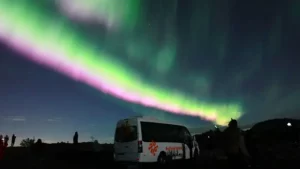Warning: Undefined variable $starting_point in /var/www/virtual/aurorareykjavik.is/htdocs/wp-content/themes/Divi/custom/functions.php on line 585
Warning: Undefined variable $duration in /var/www/virtual/aurorareykjavik.is/htdocs/wp-content/themes/Divi/custom/functions.php on line 592
Warning: Undefined variable $accommodation in /var/www/virtual/aurorareykjavik.is/htdocs/wp-content/themes/Divi/custom/functions.php on line 599
Warning: Undefined variable $difficulty in /var/www/virtual/aurorareykjavik.is/htdocs/wp-content/themes/Divi/custom/functions.php on line 606
Warning: Undefined variable $live_tour_guide in /var/www/virtual/aurorareykjavik.is/htdocs/wp-content/themes/Divi/custom/functions.php on line 615
Warning: Undefined variable $group_size in /var/www/virtual/aurorareykjavik.is/htdocs/wp-content/themes/Divi/custom/functions.php on line 622
Warning: Undefined variable $minimum_age in /var/www/virtual/aurorareykjavik.is/htdocs/wp-content/themes/Divi/custom/functions.php on line 629
Warning: Undefined variable $availability in /var/www/virtual/aurorareykjavik.is/htdocs/wp-content/themes/Divi/custom/functions.php on line 636
Warning: Undefined variable $starting_point in /var/www/virtual/aurorareykjavik.is/htdocs/wp-content/themes/Divi/custom/functions.php on line 648
Warning: Undefined variable $duration in /var/www/virtual/aurorareykjavik.is/htdocs/wp-content/themes/Divi/custom/functions.php on line 655
Warning: Undefined variable $accommodation in /var/www/virtual/aurorareykjavik.is/htdocs/wp-content/themes/Divi/custom/functions.php on line 662
Warning: Undefined variable $difficulty in /var/www/virtual/aurorareykjavik.is/htdocs/wp-content/themes/Divi/custom/functions.php on line 669
Warning: Undefined variable $live_tour_guide in /var/www/virtual/aurorareykjavik.is/htdocs/wp-content/themes/Divi/custom/functions.php on line 680
Warning: Undefined variable $group_size in /var/www/virtual/aurorareykjavik.is/htdocs/wp-content/themes/Divi/custom/functions.php on line 687
Warning: Undefined variable $minimum_age in /var/www/virtual/aurorareykjavik.is/htdocs/wp-content/themes/Divi/custom/functions.php on line 694
Warning: Undefined variable $availability in /var/www/virtual/aurorareykjavik.is/htdocs/wp-content/themes/Divi/custom/functions.php on line 701

Starting Point

Duration
~ hours

Accommodation
~ hours

Difficulty

Live Tour Guide

Group Size

Minimum Age
years

Availability

Starting Point

Duration
~ hours

Accommodation
~ hours

Difficulty

Live Tour Guide

Group Size

Minimum Age
years

Availability
TOUR INFORMATION
Itinerary
TRAVELERS’ REVIEWS
Why book with us
Easy cancellation
Tripadvisor Traveler’s Choice
No booking fees
Best price guarantee
Secure payments
BOOK TOUR
GOOD TO KNOW
FAQs
What to Bring
Cancellation Policy
OUR BESTSELLERS

NORTHERN LIGHTS SUPERJEEP TOUR
4.9
Chase the Northern Lights with the experts with our Superjeep tour. Small group experience, wilderness-ready vehicles, and highest success rate. Book now!

SOUTH SHORE & NORTHERN LIGHTS TOUR
5
Explore Iceland’s South Coast and hunt the Northern Lights on this epic combo tour. Adventure awaits. Book your place today!

NORTHERN LIGHTS SMALL GROUP TOUR
5
Join a small group for an immersive Northern Lights experience. Expert guides and unforgettable views await. Book your adventure today!
